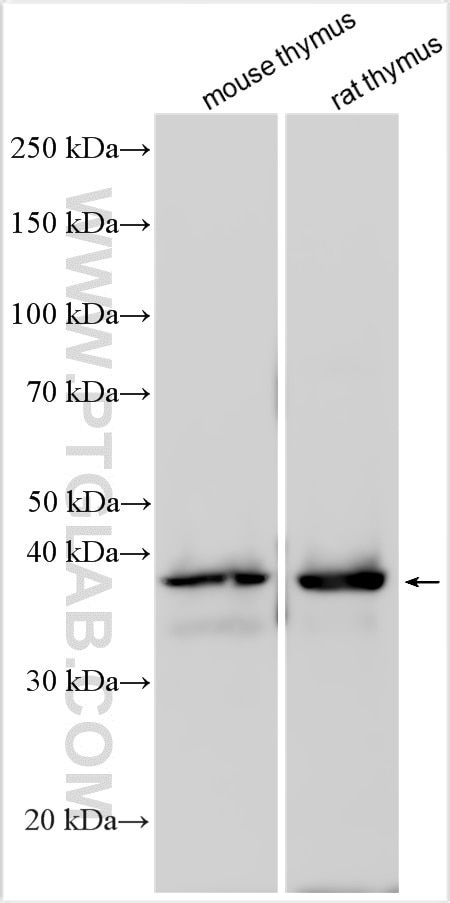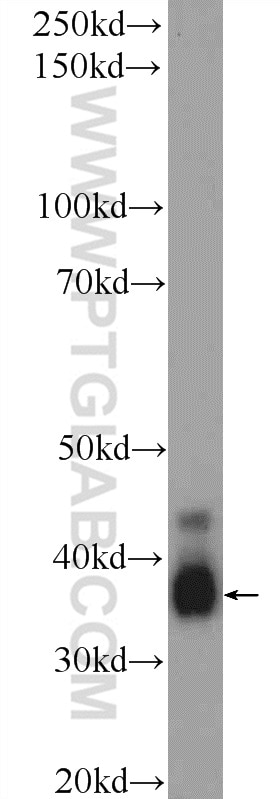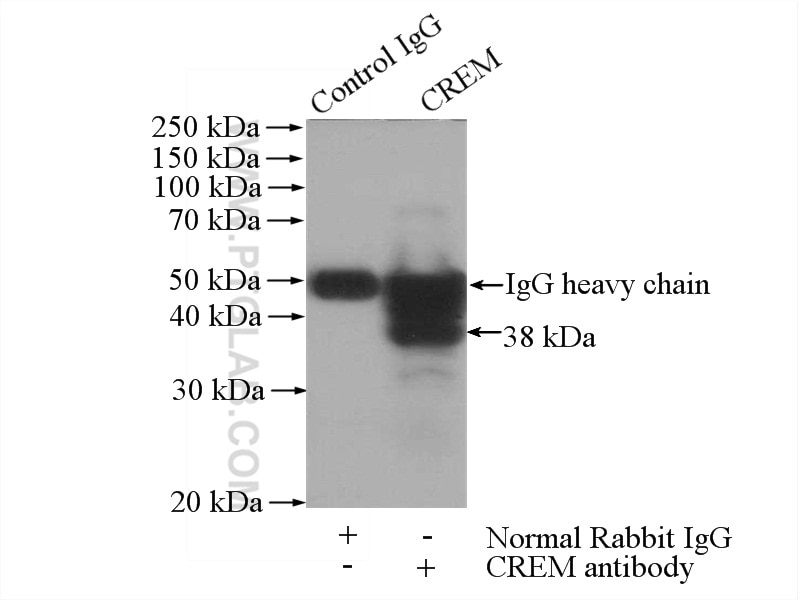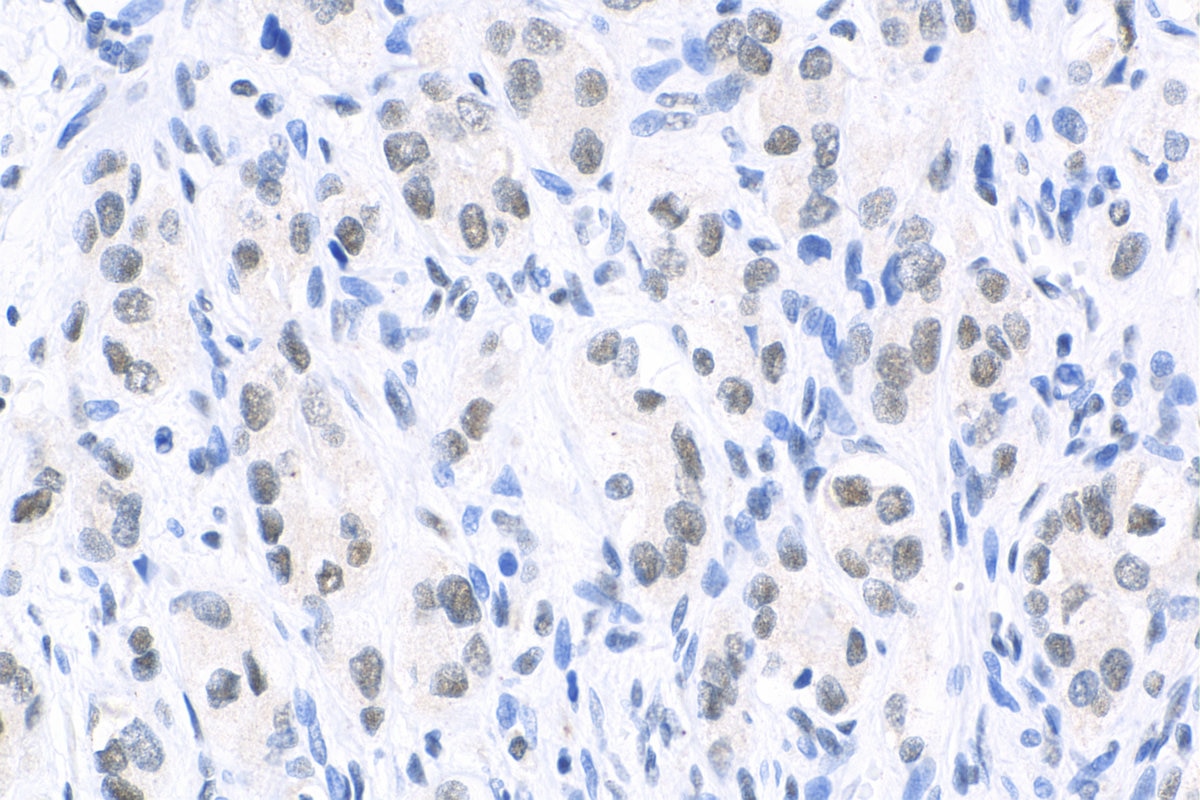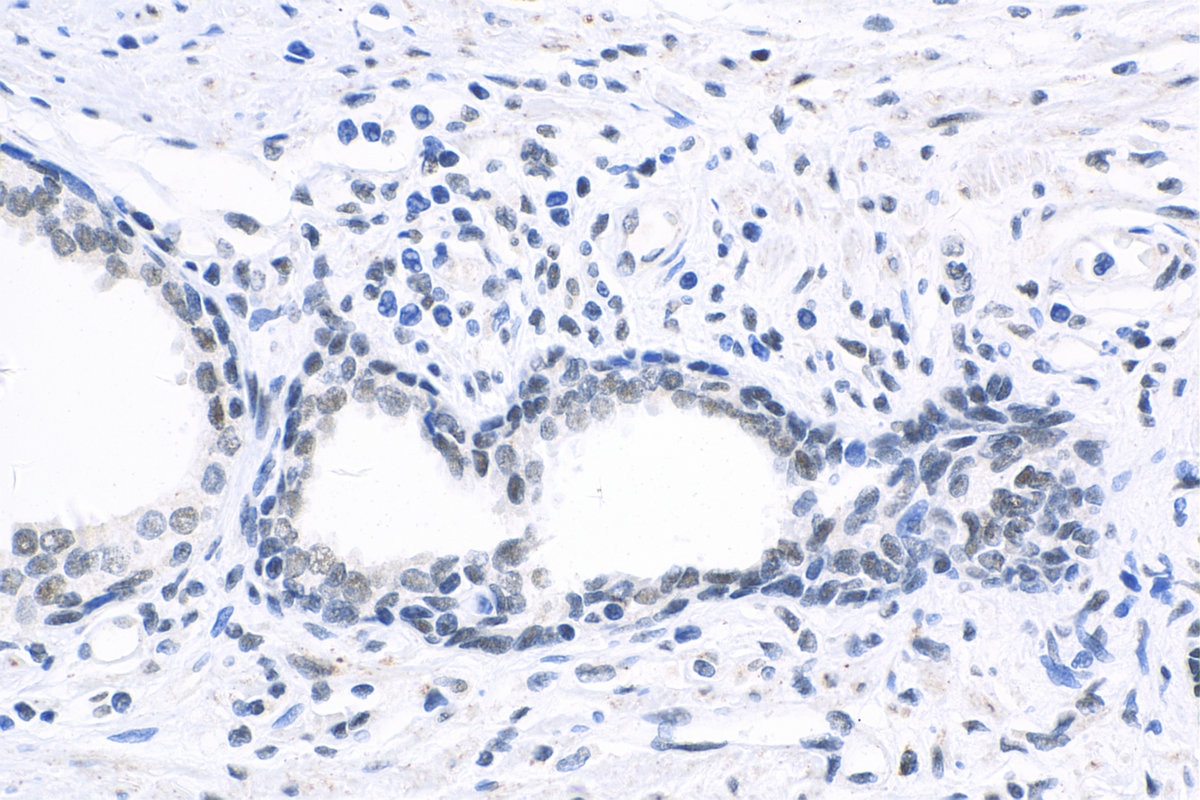CREM Polyklonaler Antikörper
CREM Polyklonal Antikörper für WB, IHC, IP, ELISA
Wirt / Isotyp
Kaninchen / IgG
Getestete Reaktivität
human, Maus, Ratte
Anwendung
WB, IHC, IF, IP, ELISA
Konjugation
Unkonjugiert
Kat-Nr. : 12131-1-AP
Synonyme
Geprüfte Anwendungen
| Erfolgreiche Detektion in WB | Rattenhodengewebe, Maus-Thymusgewebe, Ratten-Thymusgewebe |
| Erfolgreiche IP | Maushodengewebe |
| Erfolgreiche Detektion in IHC | humanes Prostatakarzinomgewebe Hinweis: Antigendemaskierung mit TE-Puffer pH 9,0 empfohlen. (*) Wahlweise kann die Antigendemaskierung auch mit Citratpuffer pH 6,0 erfolgen. |
Empfohlene Verdünnung
| Anwendung | Verdünnung |
|---|---|
| Western Blot (WB) | WB : 1:200-1:1000 |
| Immunpräzipitation (IP) | IP : 0.5-4.0 ug for 1.0-3.0 mg of total protein lysate |
| Immunhistochemie (IHC) | IHC : 1:400-1:1600 |
| It is recommended that this reagent should be titrated in each testing system to obtain optimal results. | |
| Sample-dependent, check data in validation data gallery | |
Veröffentlichte Anwendungen
| WB | See 2 publications below |
| IHC | See 1 publications below |
| IF | See 5 publications below |
Produktinformation
12131-1-AP bindet in WB, IHC, IF, IP, ELISA CREM und zeigt Reaktivität mit human, Maus, Ratten
| Getestete Reaktivität | human, Maus, Ratte |
| In Publikationen genannte Reaktivität | human, Maus |
| Wirt / Isotyp | Kaninchen / IgG |
| Klonalität | Polyklonal |
| Typ | Antikörper |
| Immunogen | CREM fusion protein Ag2775 |
| Vollständiger Name | cAMP responsive element modulator |
| Berechnetes Molekulargewicht | 332 aa, 36 kDa |
| Beobachtetes Molekulargewicht | 36 kDa |
| GenBank-Zugangsnummer | BC017117 |
| Gene symbol | CREM |
| Gene ID (NCBI) | 1390 |
| Konjugation | Unkonjugiert |
| Form | Liquid |
| Reinigungsmethode | Antigen-Affinitätsreinigung |
| Lagerungspuffer | PBS with 0.02% sodium azide and 50% glycerol |
| Lagerungsbedingungen | Bei -20°C lagern. Nach dem Versand ein Jahr lang stabil Aliquotieren ist bei -20oC Lagerung nicht notwendig. 20ul Größen enthalten 0,1% BSA. |
Hintergrundinformationen
Cyclic AMP-responsive element modulator (CREM) is a transcription factor highly expressed in the post-meiotic germ cells of the testis. Its pivotal role is to regulate the expression of several germ cell-specific genes, a crucial function as demonstrated by the severe phenotype of mice whose CREM gene was mutated by homologous recombination. CREM-deficient male animals are sterile and display a ten-fold increase in the apoptosis of germ cells. Recent results have shown that CREM needs a tissue-specific co-activator, ACT (activator of CREM in testis) to elicit its regulatory function in testis (PMID: 10824972). Also, CREM is a crucial regulator of NK cell function. CREM exerts its regulatory functions through epigenetic reprogramming of CAR-NK cells (PMID: 40468083).
Protokolle
| PRODUKTSPEZIFISCHE PROTOKOLLE | |
|---|---|
| WB protocol for CREM antibody 12131-1-AP | Protokoll herunterladen |
| IHC protocol for CREM antibody 12131-1-AP | Protokoll herunterladenl |
| IP protocol for CREM antibody 12131-1-AP | Protokoll herunterladen |
| STANDARD-PROTOKOLLE | |
|---|---|
| Klicken Sie hier, um unsere Standardprotokolle anzuzeigen |
Publikationen
| Species | Application | Title |
|---|---|---|
Biofabrication Testis on a chip - a microfluidic 3-dimensional culture system for the development of spermatogenesisin-vitro. | ||
Int J Mol Sci Effect of Chemotherapy Cytarabine and Acute Myeloid Leukemia on the Development of Spermatogenesis at the Adult Age of Immature Treated Mice. | ||
Int J Mol Sci The Expression Levels and Cellular Localization of Pigment Epithelium Derived Factor (PEDF) in Mouse Testis: Its Possible Involvement in the Differentiation of Spermatogonial Cells. | ||
Int J Mol Sci Effect of Temperature on the Development of Stages of Spermatogenesis and the Functionality of Sertoli Cells In Vitro | ||
Life Sci Adrenocorticotropic hormone and its receptor as a novel testicular system involves in the development of spermatogenesis |
